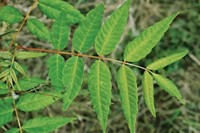Advertisement
Grab your lab coat. Let's get started
Welcome!
Welcome!
Create an account below to get 6 C&EN articles per month, receive newsletters and more - all free.
It seems this is your first time logging in online. Please enter the following information to continue.
As an ACS member you automatically get access to this site. All we need is few more details to create your reading experience.
Not you? Sign in with a different account.
Not you? Sign in with a different account.
ERROR 1
ERROR 1
ERROR 2
ERROR 2
ERROR 2
ERROR 2
ERROR 2
Password and Confirm password must match.
If you have an ACS member number, please enter it here so we can link this account to your membership. (optional)
ERROR 2
ACS values your privacy. By submitting your information, you are gaining access to C&EN and subscribing to our weekly newsletter. We use the information you provide to make your reading experience better, and we will never sell your data to third party members.
Food Science
Food chemists uncover the secrets behind pretzels’ unique scent
Researchers find 22 molecules that make chewy pretzels’ smell so tempting
by Laura Howes
June 20, 2019
| A version of this story appeared in
Volume 97, Issue 25

Brezn, Brezeln, pretzels—whatever you call them, the knotted snacks smell different from other baked goods. Despite regional variations, all soft pretzels are chewy, salty, and have a shiny brown crust made by treating the uncooked dough with lye before baking. Sebastian Schoenauer and Peter Schieberle at the Technical University of Munich say that shiny crust is where the unique smell of pretzels—or they might say Brezn—comes from (J. Agric. Food Chem.2019, DOI: 10.1021/acs.jafc.9b02601).
The pair bought freshly baked pretzels from their local bakery and used gas chromatography/mass spectrometry and professional aroma assessors to identify the odor compounds in the crusts. They found 22 odor compounds that contributed to the beguiling scent, and then recreated the fragrance by dissolving the compounds in ethanol. The team next tweaked the recipe to try to find which molecules were key to the pretzel scent.
Phenylacetic acid, for example, is in pretzel crusts and hasn’t previously been found in other breads. But if Schoenauer and Schieberle removed phenylacetic acid from their lab-made pretzel perfume, their testers couldn’t smell the difference. After removing other scent molecules individually, the researchers found two molecules that are essential to the unique pretzel scent: 2-acetyl-1-pyrroline, which has a roasted smell, and 4-hydroxy-2,5-dimethyl-3(2H)-furanone, which has a caramel smell. These molecules are found in other bakery scents, but the difference, the researchers say, lies in the proportions of the molecules, and that is influenced by the chemistry that goes on as the lye-treated crust bakes.




Join the conversation
Contact the reporter
Submit a Letter to the Editor for publication
Engage with us on Twitter